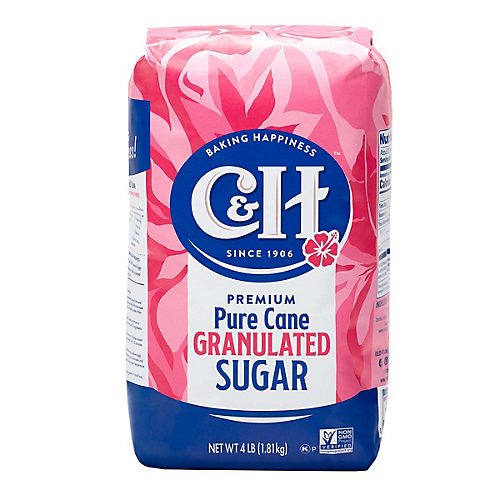Advanced Cane Sugar Processing: Enhancing Efficiency and Sustainability
Advanced Cane Sugar Processing: Enhancing Efficiency and Sustainability
Blog Article
Understanding the Important Strategies and Technologies Utilized in Modern Cane Sugar Handling
The evolution of cane sugar processing has been significantly shaped by the combination of sophisticated techniques and innovations that resolve both effectiveness and sustainability. Enzyme-assisted extraction and innovative refining methods have actually transformed yield optimization, while automation facilitates functional dependability. Moreover, the emphasis on sustainable practices reflects a growing recognition of environmental impact. As we explore these critical developments, it becomes necessary to check out just how they not just improve production however likewise straighten with wider industry trends and customer needs, elevating inquiries about the future of sugar handling and its implications for worldwide markets.
Historic Context of Walking Cane Sugar Processing
The historic context of cane sugar handling exposes a rich tapestry of agricultural technology and cultural exchange that has actually formed its advancement over centuries. Coming From Southeast Asia, sugarcane was grown as early as 8000 BCE - Cane Sugar Processing. The procedure of improving and drawing out sugar got momentum in India, where techniques for condensation were developed around the 6th century. This understanding went across to the Middle East, and by the 12th century, sugar ended up being a valued commodity in Europe, causing the establishment of sugar haciendas in the Mediterranean.

Advanced Removal Strategies
Performance in walking cane sugar extraction has seen significant innovations, driven by the requirement for greater yields and reduced manufacturing costs. This method not only increases sugar yield yet also lowers the energy needed for handling.
Furthermore, the fostering of membrane layer filtering modern technologies, such as nanofiltration and reverse osmosis, has actually reinvented the separation of sugar from pollutants. These methods enable the selective permeation of sugar molecules while preserving larger impurities, streamlining the extraction process and minimizing waste.
In addition, the combination of continuous extraction systems has brought about boosted operational efficiency. Cane Sugar Processing. These systems preserve a consistent circulation of walking stick material, making certain ideal extraction conditions and decreasing downtime related to batch handling
Innovative Refining Technologies
Refining techniques in cane sugar processing have undergone a transformative shift, driven by the need for greater purity and boosted product high quality. One of one of the most notable developments is the adoption of membrane layer purification innovations, such as ultrafiltration and nanofiltration. These processes effectively eliminate my explanation impurities and colorants without the need for extensive chemical therapies, consequently preserving the sugar's natural taste and enhancing its appeal.
One more substantial development is the use of ion exchange resins, which permit discerning elimination of unwanted ions from sugar services. This technology not only increases the overall purity of the final product but likewise adds to lowered waste and environmental influence.
In addition, developments in adsorption strategies, utilizing activated carbon and other advanced products, have shown efficient in decolorizing sugar remedies while preserving optimal top quality. The integration of these cutting-edge refining innovations guarantees that suppliers can generate refined sugar with premium clarity and taste, satisfying the evolving preferences of consumers.
Automation and Control Solution
Recent developments in refining innovations have actually led the way for substantial enhancements in automation and control systems within cane sugar handling centers. These systems make use of advanced software program and equipment to boost operational efficiency, lower visite site human error, and make sure regular item top quality.
Modern automation incorporates numerous elements, consisting of sensors, actuators, and programmable reasoning controllers (PLCs), enabling real-time monitoring and control of essential procedures. For example, temperature, pressure, and flow rates can be exactly controlled during extraction, clarification, and condensation stages, maximizing performance and minimizing waste.
Moreover, progressed data analytics and artificial intelligence formulas play a critical role in predictive maintenance, enabling operators to anticipate equipment failures before they happen. This positive approach not only minimizes downtime yet also prolongs the life-span of machinery.
Additionally, automation facilitates the execution of Sector 4.0 principles, encouraging sugar mills to accomplish higher connectivity and information exchange across processes. Consequently, decision-making becomes more educated and dexterous, ultimately enhancing the overall competitiveness of walking cane sugar manufacturing. With these innovations, the sector is well-positioned to satisfy growing worldwide demands while maintaining functional excellence.
Sustainability Practices in Sugar Production
Sustainability techniques in sugar manufacturing have actually become significantly vital as the market seeks to stabilize economic viability with environmental obligation. As consumer awareness grows relating to the ecological influences of farming methods, sugar manufacturers are taking on cutting-edge methods to reduce their eco-friendly impact.
One considerable strategy is the implementation of precision agriculture methods, which make use of data analytics to optimize resource usage, such as water and plant foods. This lowers waste and reduces the effect on neighborhood ecological communities. Furthermore, several producers are transitioning to renewable resource sources, such as biomass from sugarcane byproducts, to power their procedures, therefore lowering dependence on fossil fuels.
Water administration methods are additionally crucial; rainwater harvesting and effective irrigation systems help minimize water deficiency issues. Cane Sugar Processing. Additionally, incorporated parasite administration methods lower chemical usage, promoting biodiversity and soil health
Business social obligation campaigns are arising, with companies purchasing regional areas and guaranteeing reasonable labor techniques. By welcoming these sustainability practices, the sugar industry not just enhances its track record but also adds to a much more lasting farming landscape, leading the way for future generations.

Verdict
In recap, modern cane sugar processing includes a variety of advanced methods and modern technologies that considerably improve effectiveness, sustainability, and yield. Collectively, these developments position the walking cane sugar industry to fulfill modern needs while attending to crucial international challenges.
The development of walking cane sugar handling has actually been significantly formed by the integration of innovative techniques and innovations see this here that attend to both efficiency and sustainability.The historic context of cane sugar handling exposes an abundant tapestry of agricultural innovation and cultural exchange that has formed its advancement over centuries. Developments in milling and refining emerged, laying the groundwork for contemporary cane sugar processing.Refining techniques in walking stick sugar processing have gone through a transformative change, driven by the need for higher purity and improved item high quality.In recap, contemporary walking stick sugar processing incorporates an array of innovative techniques and innovations that dramatically enhance efficiency, yield, and sustainability.
Report this page